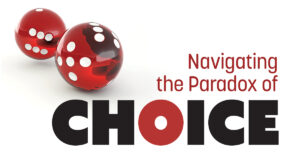For mortgage lenders, brokers and lead generators, navigating federal law surrounding telephone marketing and other lead generation outreach isn’t just a legal requirement. It’s a business-critical priority.
The Telephone Consumer Protection Act (TCPA) is a federal law passed in 1991 that went into effect in 2003 to safeguard consumers from unsolicited calls. The potential for class-action lawsuits, stiff penalties and brand damage makes managing TCPA consent essential for business protection.
This especially holds true for the mortgage industry where marketing is heavily driven by phone calls, text messaging and digital forms.
At its core, TCPA consent refers to consumers’ explicit permission to be contacted via phone or robotext. When businesses use automated dialing systems (ATDS), like predictive dialers or Short Message Service (SMS) tools, they must obtain prior express written consent from the consumer before reaching out with marketing messages.
“Even well-meaning outreach can become a compliance liability without clear, documented consent.”
In a high-stakes industry like mortgage lending where marketing and lead generation often involves the dissemination of sensitive financial services information, the risk of TCPA violations is high. Even well-meaning outreach can become a compliance liability without clear, documented consent.
Meeting compliance requirements
Mortgage companies generating or buying leads must be especially diligent in following TCPA consent requirements. Here’s what the major requirements look like in practice.
1. Obtain prior express written consent. Under the TCPA, calls or texts made using auto dialers or pre-recorded messages for marketing purposes require prior written consent from the consumer. This consent must be voluntary, clearly documented and stored. It should be accompanied by a conspicuous disclosure language. For example, the disclosure might explicitly authorize using auto dialers or pre- recorded messages. For mortgage companies that rely on lead vendors or partners, verifying that this consent exists, and that it’s properly documented, is non-negotiable.
2. Use accurate disclosure language. When using lead capture forms in compliance with TCPA rules, the consent must be clear and conspicuous and not buried in the terms of service section or hidden behind obscure links. Mortgage advertisers must ensure the actual text shown to consumers at the point of opt-in meets TCPA legal and compliance standards.
3. Ensure auditability. Businesses must be able to produce proof of consent if challenged. That means having tools in place that allow for record-keeping, storage and a replay of the original consumer interaction (for example, session replays, certificates of authenticity, and so on). Retain call and consent records for at least five years to ensure adequate documentation for defending against potential TCPA litigation and responding to regulatory inquiries.
4. Respect do-not-call lists. Businesses are required to scrub leads lists that appear on the national do-not-call registry, state do-not-call lists and reassigned numbers database, which is a list of numbers that were once held by an individual and reassigned to a new person. It is crucial that companies maintain internal do-not-call lists of consumers who’ve opted out of communication, and refrain from calling or texting consumers who’ve previously withdrawn consent.
Ensure lead-generation compliance
Mortgage companies must ensure that the leads they buy from lead generation companies comply with TCPA regulations. Consumer consent must be documented appropriately, showing exactly when, where and how consent was given.
This includes a certificate of authenticity that proves a consumer viewed and interacted with compliant consent language. These certificates can be stored, audited and shared, protecting you in case of disputes or lawsuits.
A key defense against TCPA litigation is showing that your consent language was accurate and visible to the consumer. Using compliance tools available today, you can programmatically analyze the size, contrast and placement of the disclosure language on your lead forms.
This not only ensures you meet the “clear and conspicuous” standard required under the TCPA but helps you uncover and correct potential risks before leads are purchased or contacted. You can also reduce exposure by confirming your lead sources are displaying proper TCPA disclosures at the point of data collection.
Filtering risky leads
TCPA compliance isn’t just about proof of consent. It’s also about minimizing the chance of contacting known bad actors or bad data. By using available tools, you can automatically reject known TCPA litigants, duplicate leads, records with invalid email or phone numbers and leads on internal or national do-not-call lists.
By filtering out low-quality or risky records before you buy or route them, you can simultaneously improve compliance and the performance of your marketing campaigns. This means less time and money wasted on leads that are non-compliant, unreachable or legally dangerous.
“When working with external lead vendors, never take their word for it.”
When working with external lead vendors, never take their word for it. Insist on third-party documentation of consent and regularly audit vendors to ensure they’re following proper consent collection procedures.
Establish workflows that accept leads only with verified TCPA consent and checks for consent proof, as well as routes the leads based on compliance criteria. This yields full transparency and control over the process of lead acquisition, reducing liability and improving conversion rates.
Internal teams and external partners should all be aligned on what TCPA consent means, how it’s collected, and how it’s documented. Invest in ongoing training and require vendors to adhere to your compliance standards.
TCPA lawsuits have led to multi-million-dollar settlements in the mortgage industry. But it’s not just about avoiding fines; it’s also about improving operational efficiency and the return on your marketing investment.
Proactive consent management
With regulatory risks and litigation on the rise, mortgage companies need to go beyond checking compliance boxes. Proactive consent management can drive a better return on investment from marketing efforts, and bring stronger customer trust and long-term business sustainability.
By implementing the right mortgage TCPA compliance tools and strategies, your business can reduce risk exposure to known litigants, avoid costly legal battles, improve marketing performance by filtering out bad data and prove and protect consent from leads and customers.
Whether you’re generating leads in-house or buying them from partners, documenting and verifying TCPA express written consent is no longer optional, it’s a competitive advantage.
TCPA compliance can feel complex, especially in a fast- moving and highly regulated industry like mortgage. But with the right systems in place, managing consent becomes an opportunity, not a burden.
Author
-

Marialuisa Aldeghi is a senior content strategist at ActiveProspect, where she crafts content that empowers marketers to navigate lead acquisition and TCPA compliance with confidence. She leads strategy for educational resources across the platform — especially around TrustedForm, ActiveProspect’s industry-leading consent verification tool — turning complex topics into clear, actionable insights.
View all posts





















































